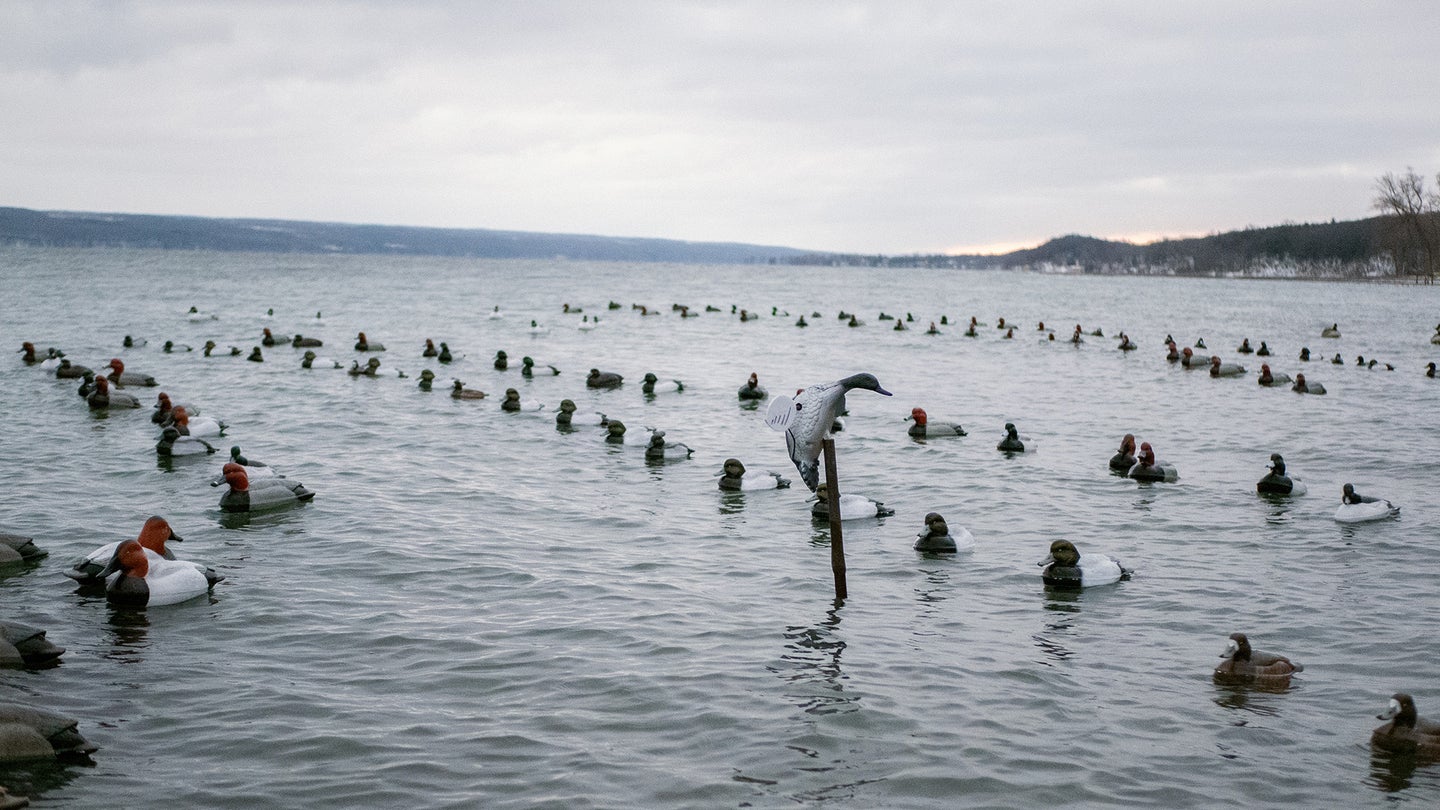Waterfowl Workbench: How to Make DIY Long Lines for Divers

Long lines are one of the most common decoy spreads for diver hunting. Jonathan/Adobe Stock
We may earn revenue from the products available on this page and participate in affiliate programs. Learn more ›
If you are considering getting serious about diver hunting, you’ll need a lot of decoys and long lines to rig them on. Of course, long lines aren’t the only way to hunt for bluebills, redheads, canvasbacks, and other popular diver species. But it is still one of the most effective and popular decoy spreads for big water hunting. And there’s no better time than the off-season to make a DIY long line for divers.
Long lines feature a single heavy cord, a.k.a. the mainline or mother line, often 150 to 200 feet long, anchored at both ends to which individual decoys are clipped at intervals. This creates a line of decoys that imitate how many of diver species sit in the water. Any number of manufacturers, like Doctari Longlines, offer excellent ready-to-hunt rigs. However, you can create a DIY long line with only a few items, tailoring it to your specific hunting conditions and requirements. Here’s how to get started.
All the materials needed for making a long line rig. M.D. Johnson
Materials
I’m a fan of one-stop shopping, so I went to Rig ‘Em Right Outdoors for most of the materials and picked up a few smaller items on Amazon. However, there are two different ways of rigging the individual decoy dropper lines, so I created an additional materials list if you want to build your own dropper lines.
Two 3-pound grapple anchors (or old window weights)
3-1/4 inch brass swivel snap hooks
Cord storage reel
Follow the material list below if you’re looking to build your own dropper lines:
Aluminum 1/8-inch ID cord crimps
5-inch stainless halibut/tuna snap clips
How to Make DIY Long Lines Step-by-Step
Step 1: Assemble the mainline
Unless I’m running shorter 30-foot-long lines for puddle ducks on tidal water, my typical diver long lines are all 150 feet long. First, lay out all 150 feet of the ¼-inch mainline. Then, attach a 3-1/4-inch brass snap hook to each end using two strong cable ties above each hook. Make sure these ties are cinched down as tight as possible. These two hooks will be used to secure the anchors, whether Rig ‘Em Right grapples or window weights. To store the mainline, I use a power cord storage reel.
Attach a brass snap hook to each end of the mainline via heavy-duty zip ties. M.D. Johnson
Step 2: Build the droppers
Cut a dozen 40-inch lengths of PVC decoy cord. This provides 2 inches of overlap at either end for fastening hardware while still providing 36 inches of vertical lift. This offers plenty of room for a retriever to swim overtop the submerged mainline without getting tangled. On each length of PVC cord, attach a decoy rigging swivel to one end using an aluminum cord crimp and a 5-inch halibut or tuna clip to the other, again with a cord crimp.
Using side cutters to secure the aluminum crimps may seem like a good idea, but it isn’t. In crimping the aluminum with cutters, the PVC cord can become cut or compromised, resulting in an on-the-water failure and potential loss of decoys. Trust me, I know.
Attach a halibut clip to one end of the dropper line for easy connection to the mainline. M.D. Johnson
Step 3: Rig the decoys
If you’re using the RMR Gang Rig Droppers, simply clip the smaller snap swivels on each dropper to the decoy. On the water, secure the 6-inch stainless (halibut) clips to the mainline at intervals, maneuvering the boat accordingly. These large halibut clips make setting and picking up decoys easy and organized. I recommend either using a power cord storage reel or a 5-gallon bucket to store the mainline neatly in the boat.
The post Waterfowl Workbench: How to Make DIY Long Lines for Divers appeared first on Field & Stream.
Articles may contain affiliate links which enable us to share in the revenue of any purchases made.
